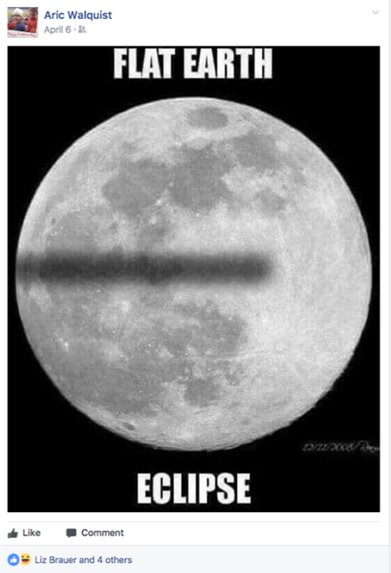2017 Planting Season
(As published in Chris’s update to DRW colleagues…)
And now, the Southern Illinois Walquist 2017 Corn Planting Update
This is roughly how things looked for many farmers:
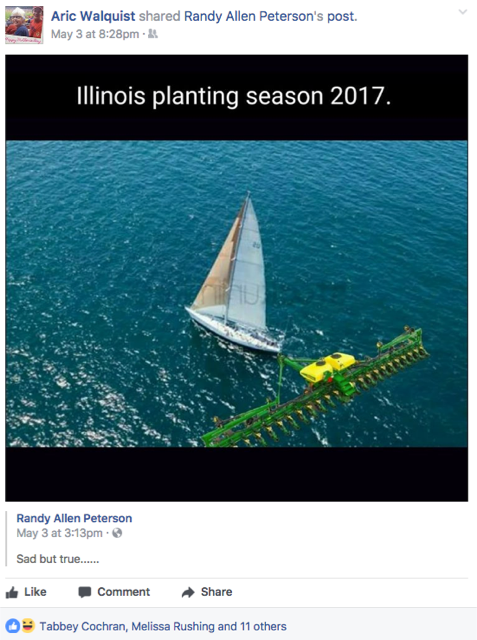
White smoke was a common sight, in fields where farmers were burning off flood debris. This was necessary so the underlying soil could dry out for planting (and in many cases re-planting). At one time, this field on the family farm was the bottom of the Ohio river; this year reminded us why.

My favorite 17,700-lb four-wheel-drive, all fueled and ready to go.
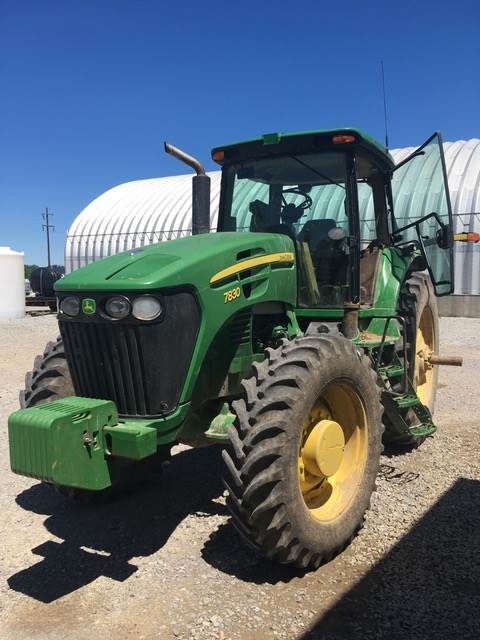
Aric loading 20 bushels (about 50 acres worth) of seed corn. It’s worth being careful, not only to be nice to his truck’s bodywork, but also because the seed runs about $220/bushel.
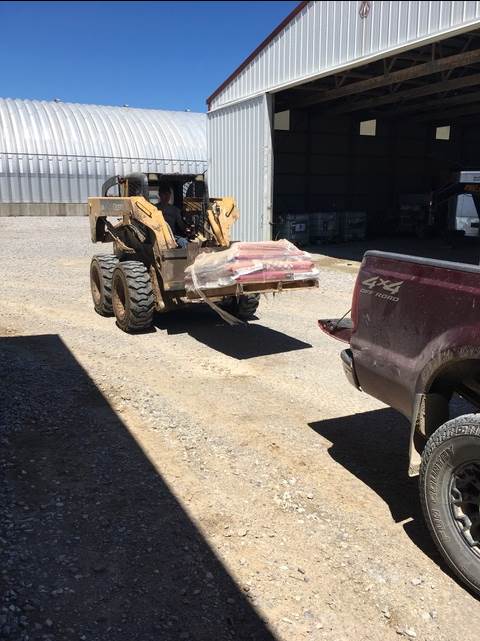
Setting up the planter includes fixing broken stuff (more on that), looking up the right gear ratios for the wheel-driven seed meters, setting the seed depth, hooking up the planter’s maze of connections to the tractor, and of course putting in the seed. We add graphite to each seed hopper to keep the seed from clogging the planting unit’s metering plates or chute.
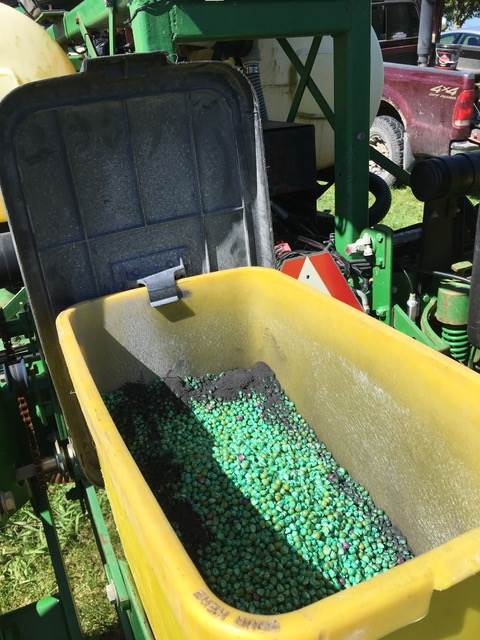
Aric and I got everything hooked up and set, and then tried unfolding the planter. Every year, I forget how to do this, which results in (for instance) attempting to unfold the wings without unlatching them first, or attempting to unlatch without first raising the wings from their resting place on the center frame. These shenanigans put a fair amount of stress on the hydraulics, which are designed to handle the tractor’s 3,000psi system–when new. Our planter, however, is a 1995 model that has spent most of its long life outside. Last year we escaped without fixing any hoses, but this year…
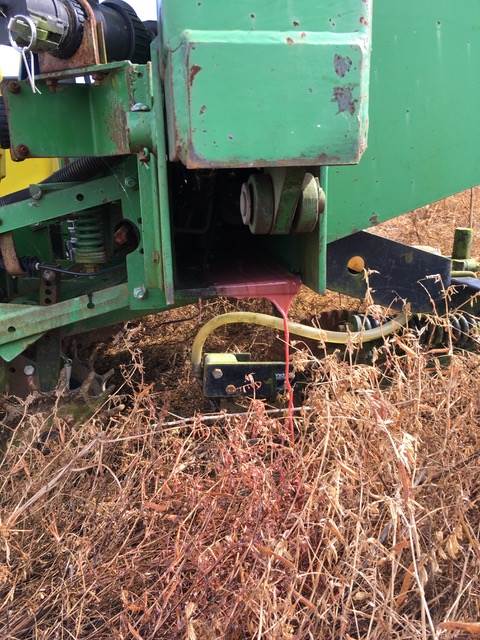 bleeding planter
bleeding planter
Fortunately, since the same thing had happened a couple of years ago to the left side, we knew we just needed to replicate our hose patch on the right side.
A trip down the road to Hutson John Deere dealership, where Cheryl made us a set of patch hoses (she also did them for us two years ago!) , and we put ’em on and gave it another try.
By now, I’d rejuvenated my atrophied planter-unfolding skills and did the correct sequence this time. Unfortunately, Cheryl (not her real name) had apparently also allowed her skills to atrophy…
I pulled back on the lever to raise the planter off the ground and Pow. What a mess. Good thing the tractor has a 30-gallon hydraulic fluid reservoir.
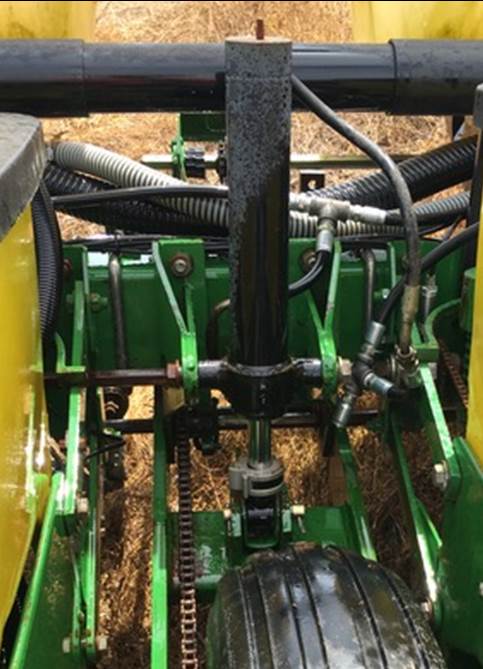
Back to Hutson to re-crimp the failed end, and back to the field for another try…and again, Pow. At least it was a different hose end that failed. Back to Hutson. This time Steve, re-crimped the hose (I saw Cheryl when I walked in the door, but she completely ignored me).
Also this time, we learned that if one is not confident of the quality of hydraulic hoses one is about to test, one should not park one’s truck in the potential path of escaping hydraulic fluid.
And especially not with the window down.

While contemplating the depressing prospect of a fourth (and possibly fifth, sixth, seventh) trip to Hutson’s, it occurred to me that I should just have them re-crimp all the remaining ends (there were twelve!) of our network of patch hoses.
The context of all this drama: This was our last window to plant. Rain was forecast for tomorrow, and by this point we had spent the whole afternoon playing with hydraulic hoses and running back and forth between the field and Hutson’s, with no seed in the ground to show for it. All along each side of the road between our disabled planter and Hutson’s, farmers devoured the acres in their twenty-four-row centerfeed planters pulled by 4wd GPS tractors. I was so envious.
Long story short, I went once more back to Hutson and Steve fixed me up (Cheryl continued to ignore me). The re-done hoses stood up to the 7830’s hydraulic system. I got our planter unfolded and some seed in the ground before end of day.
A full day of breaking stuff can really work up an appetite. I love me some home cooked meatloaf, baked potatoes and fresh raw milk. Thanks Mom!
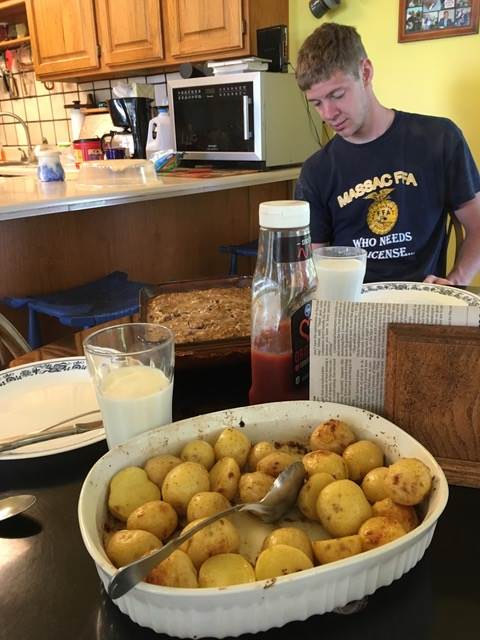
Our field has an amazing population of obstacles: tile standpipes, drainage ditches, washouts, a pond, numerous wet spots, springs, trees, stumps, a cemetery (!), houses. What would it be like to plant a rectangular, flat, well-drained field?
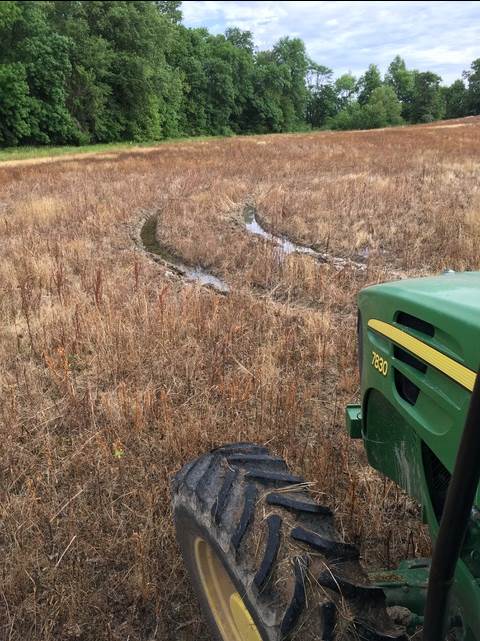 Should I turn around now? Yeah, probly
Should I turn around now? Yeah, probly
Incredibly, I managed to not get stuck, although I came VERY close once or twice. Finally, all done! Just a little cleanup to do (note the specialized planter-cleaning implement in the foreground).

Will it be ready for next year? Only time will tell…

And finally, a few more selections from my brother Aric’s facebook feed
From the ‘Hey, watch this!’ dept, featuring my nephew Andy on the hydraulic post-hole digger. (He did in fact do a few revolutions).
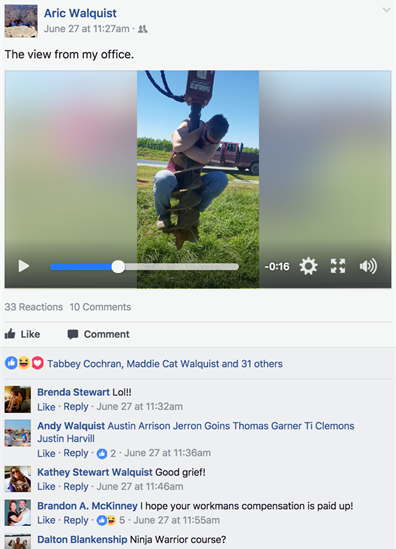
Ford owner Aric to Dodge owner cousin Scott:

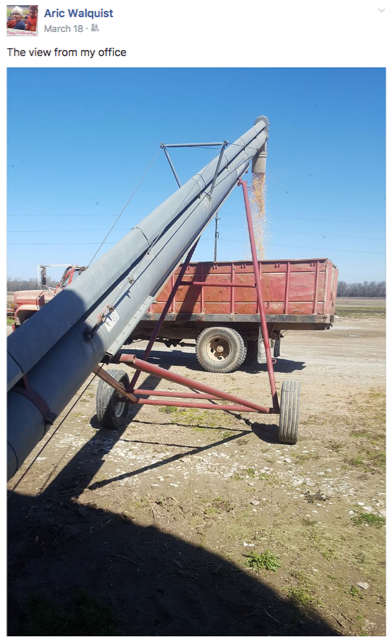

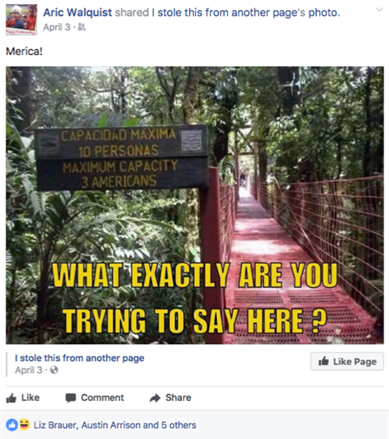


Everybody’s looking forward to the 21 August eclipse…
